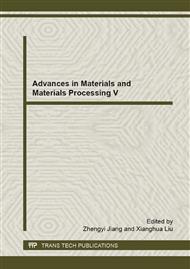p.411
p.415
p.419
p.423
p.429
p.433
p.437
p.442
p.447
Analysis of Impact of Moisture Content on Rock Thermal Conductivity Coefficient Using TCS Method
Abstract:
The coefficient of thermal conductivity scanner (TCS) was used to test granodiorite, sandstone and rhyolite samples, focuses on the changing rule of the thermal conductivity coefficient of rock under different moisture content. The coefficient of thermal conductivity of the rock increases with water content, and follow a linear relationship. The relative thermal conductivity of three kinds of rock sample is: granodiorite higher than sandstone and higher than rhyolite. The higher the structure density at the same time, the smaller the porosity, the stronger the cementation, the higher the strength, the greater the thermal conductivity of rock mass. This conclusion can be used with geothermal energy development, and has certain reference value.
Info:
Periodical:
Pages:
429-432
Citation:
Online since:
March 2015
Authors:
Price:
Сopyright:
© 2015 Trans Tech Publications Ltd. All Rights Reserved
Share:
Citation:


